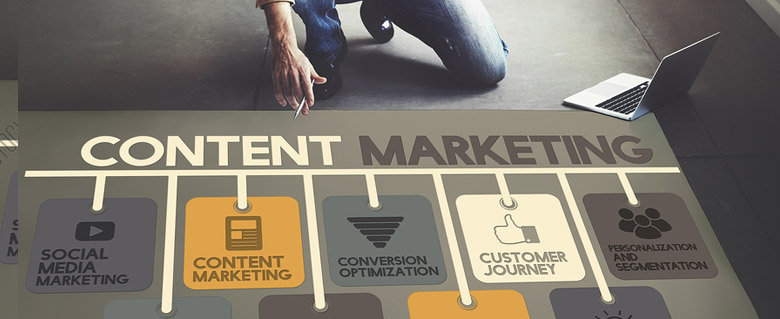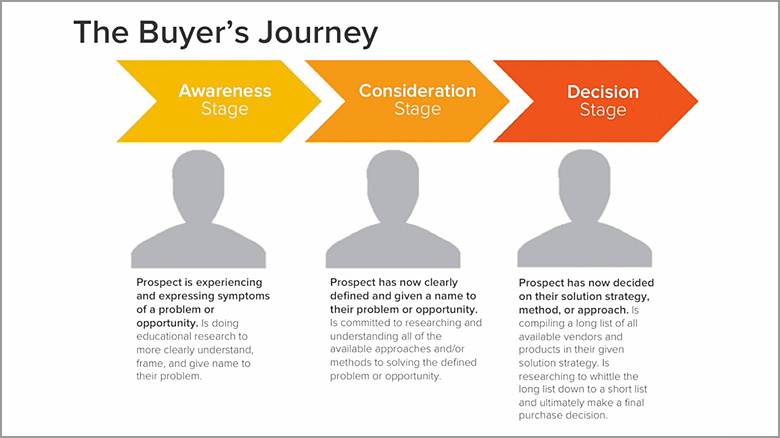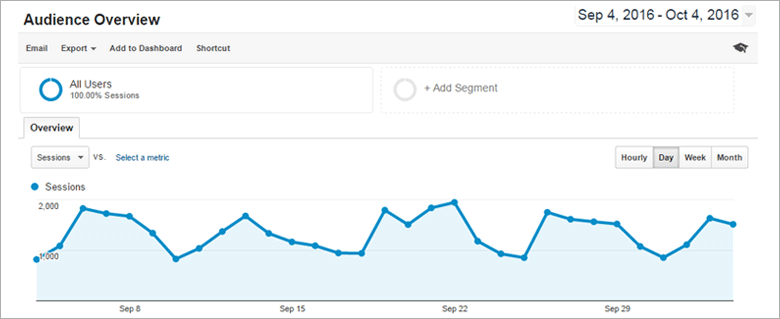
How to Make Your Website More Effective (part 1)
Over the years, I have dealt with a large variety of clients, from a variety of different backgrounds. They come from all different industries, bring with them all types of budgets. Some already have websites; some don't and are looking to start fresh. From each client and background goals vary. Some want to bring additional traffic; others want to increase conversions.
Through all variations, there’s one universal goal: they want their website to be more effective at bringing in revenue. They all want to make more money from their website, have their advertising dollars become more effective, and display the capabilities of their business in a positive and professional manner. This 5-part series was created to help you understand the basics of how your website design and SEO can work in unison with your goals, and also to provide valuable insight to making your web presence generate more income. Interested? Read on.
1. Think of Your Website Like an Advertisement

Ads are everywhere, but few stand out among the crowd. Between advertisements on YouTube, billboards, pop-ups, and suggested pages, most people see over 5000 marketing messages per day. But think of the last Ad that caught your attention. Not the annoying pop-up that demanded your credit card number, but an Ad that made you watch, read, pause to reflect, or envision something in the future. Think of the use of color, the message, and what the Ad made you feel. Effective advertising today evokes feelings of trust, loyalty, pride, empowerment, and sadness, just to name a few. Ever see an ad or commercial focused on getting donations to support a non-profit or charity? The video most likely showed a level of suffering, then a positive effect after a person receiving a donation or sponsorship. These ads are designed by their creators to draw you in impulsively, emotionally, or some other "feeling" and take the desired action.
Your website should be no different. When looking at how to generate additional revenue from your website, it is best to consider your site to be an interactive advertisement with multiple entry points. Each of your website's pages has an opportunity to convey a message, and the effectiveness of that message comes down to the design and the way that you connect with your target audience. More on that later.
When visiting a product or service page on your website, think of the questions you get asked repeatedly by potential clients. Does your website answer these questions effectively? Review your existing site and look for weaknesses. This can include items such as:
- Poor page layouts, user un-friendly design
- Confusing wording or industry terminology (use industry terminology only if your business targets individuals that would understand said verbiage)
- Lack of detail about products or services
- Lack of supporting images or data
- Lack of supporting infomation (If you say you are "the best at XYZ" can you prove it with reviews, product specifications, or test results?)
Addressing these items wherever possible can help in improving results from an existing site, or helping to avoid a slow growth period after creating a new one. "But...what about page length?" Don't worry about it! Creating longer pages to include comprehensive information can work to your advantage, as independent Google search studies have shown that longer pages rank better in search results and generally perform better than "short-form" websites at getting conversions.
2. The Website Design

Website designs come in all shapes and colors, resolutions and formats, layouts and styles. In the world of today's advertising, getting noticed is difficult if you are not aware of your audience. Knowing your marketing audience is one of the first steps in creating a satisfying experience for them. An easy way to discover how to design/redesign your website is to do a search for what you offer and see who comes up. This can be a local search to discover who your competitors are or a national search to check out the larger players. Look at the different ways that other businesses promote themselves and see what is out there. This can let you know what you are up against, and how you can provide an informative, visually pleasing experience for your users.
When searching, pay close attention to how you navigate through the different sites, and how each site makes you feel. If you notice yourself starting to get drawn in, ask why you feel that way. If you start to feel like you want to contact them, look for the area that got you to that point. If you start to have questions about a product or service that the website does not answer, think of how you would address that subject on your own website.
In addition to learning how to convey your message effectively, also pay close attention to how the site is optimized. See how they place header tags, how they utilize their keyword placement and the layout of the page elements. Learning how to get your site ranked higher in search engines is a vital part of increasing the earnings potential of your site, and will be extensively covered in part two of this series. If your website can't be found, no one will contact you.
Analyzing your design and comparing it to others that are already successful can be one of the easiest and least expensive ways to learn how you can improve an existing site or design a better one, simply by learning from the successes and failures of others.
3. Remembering Why You Are Great

When you meet with clients, speak with potential product buyers, or rave about a service you offer, chances are you have a unique selling point. Even if they are involved in a similar industry or offer a similar product, no two businesses are the same. If you have owned a business for many years, think back to why your business was better than a competitor. Think of the way you would describe why what you did was better than a competitor.
- If you are just starting out, why should someone choose you over an already established entity?
- What new views or benefits do you bring to the table?
- If you are an already established business, flex your experience muscle! Show all the positive reviews, completed projects, or anything that can let a potential client that you are the best person/company for their needs.
For most business owners (especially those reading this article), they already have the answers to these questions, and could easily recite them at the drop of a hat, but do not accurately communicate these ideas and details on their website. With over a billion websites on the internet to choose from, how do you promote yourself as something different? Generating additional revenue from your site can come down to clearly communicating why you are a better solution to fulfilling a need or fixing a problem. Here is a bullet list to help you get started:
- Why is my product/service better than others?
- What makes my approach to a problem or need more effective?
- How do other businesses approach this need or problem?
- How do I plan to target my audience, and is my website ready to be marketed?
- Do I have the appropriate tracking methods set up to determine if my efforts are successful?
4. When to Ask for the Conversion

Think of the last item you purchased (online or in-store), or the last company you hired to perform a service at your home or business. Did you look at any product reviews? View images of their completed work? Look at customer comments or recommendations? I know I did. In fact, 81% of all online shoppers researched one aspect or another before making a final decision. According to Angie’s List, they recommend getting at least 3 bids before hiring a provider to see how they respond, to understand the professionalism of the company, and also to get the best price. Research before hiring or buying is becoming more popular due to the wealth of information available at your fingertips. Always remember this fact: It can take you many hours to design the best experience possible, but if you don't put in the effort, it only takes 1 second for a user to click the back button and forget about you forever.
When you describe your products or services in person, chances are you don’t ask for an email address or credit card up front. For most businesses, this process would not be effective. Most people (that value their money) would not make a decision that quickly without understanding who the company is, or what the benefits of their products are. Understanding where your potential clients are at in their “buying journey” is crucial. HubSpot did an excellent write up on “The Buyer's Journey” that details how to target customers at each stage. Some potential clients may be soliciting multiple companies looking for a service, and are not yet ready to make their decision without knowing more information. Others may have already heard of your company or service and would like to know more before moving forward.
What is the Buyer's Journey?
The concept of The Buyer's Journey is easy to grasp. People come into your site at different stages in the buying and decision-making process. Some are making the first discovery that they have a problem, and are looking for additional information. Others are well aware that they have a problem or are in need of a particular product and are looking for providers to fill that need.

Understanding how to better target your users at each stage of the buying journey is one of the most important areas during a website audit, as this can be the difference in a conversion, and a click of the back button. Approach the design of each page of your website based upon how you are going to direct traffic, what questions your users need answered, and how you provide the best solution to their problem. The biggest mistake I see on website audits is people rushing through subpage design, and not understanding how valuable they can be. Think about this: depending upon how a user searches for your product or service, they can come into your site and land on any URL. Make sure all pages answer the questions that users could ask, or make it easy to locate through a clever UI.
NOTE: This is a much different process for smaller, more focused websites, such as AdWords landing pages, or specific pages on your site that are for converting in reponse to an email blast. These pages generally should focus on grabbing the desired info or having them take the desired action as quickly as possible since the user has already shown an interest in your subject matter.
Fun link: The Best Landing Page Designs
5. Standing Out in a Crowded Room

As our appetite for information grows, so does the capability of the browsers and search engines to fill that need. Think of a website that you viewed ten years ago. Most likely, it resembled a Word document. Lots of text, simple layouts, few images, in a word; boring! Modern browsers such as Google Chrome, Internet Explorer, Safari, and Mozilla Firefox are capable of showing advanced coding scripts, CSS (cascading style sheets) transitions, animations, videos, responsive layouts, and effects that were not possible just a few years ago. Web sites today use all forms of videos, animations, and dynamic design elements to get your attention to the areas they deem important.
The point is: make your website fun! The web is such a neat place because it's interactive. Give users something not only interesting to look at, but something to interact with. When people are shopping for a product or service you provide, make your website stand out from others by making the experience one to remember. Your website is a live, interactive space that can be updated in an instant. One of the mistakes that businesses make is to design their website once and leave it that way. Your website is NOT A PRINT AD, and should be frequently updated to reflect current specials, offers, news and anything else that can help explain why you are the first choice! If your website is built in a legacy platform that is more difficult to update, consider tying in the most recent posts from your company’s Twitter or Facebook page to keep the content fresh, and let users know you are a company on the move.
NOTE: Once you have created your online experience, don't forget to thoroughly test your site in all major browsers to ensure the experience is consistent across all platforms. Last thing you want to do is design an awesome desktop experience only to find out that your efforts look terrible on a mobile or tablet device (unless your marketing campaign focuses specifically on desktop or mobile).
6. Learning from the Big Dogs

Service and product advertising is not a new process. As of 2016, there are over a billion websites that exist, and many of the larger players have spent hundreds of thousands of dollars discovering ways to engage their audience more effectively. To give you an example, Red Bull's marketing budget in 2010 was over $900 million. Even though your business may not offer a product or service on such a large scale, there can be valuable lessons learned in taking a large-scale approach to providing a solution and then downsizing/modifying it for your purposes.
An example of this could be looking at a marketing email that you received from a large store chain and reviewing how they communicate their message. Another example could be looking at how larger businesses request information from visitors during a visit to their website, and when they choose to do so during your decision-making process. Look at the consistency of the design across the website, social media, and any branding. Notice a trend? Spoiler alert: It all matches or is consistent in the message in some way. The message here is; start analyzing more effectively and look for things that may appear simple on the surface, but do a lot to build brand credibility.
Fun fact: The first recorded form of paid advertising started in June of 1836.
7. Using the Tools

Since online marketing really took off, there have been many free tools aimed at helping people analyze their website to improve its performance in one metric or another. Between free website graders, heat maps, traffic reports and page speed reporting, you have a multitude of methods to determine why your site is not effective, or how to milk your existing site for all you can.
One of the best free tools available to all business owners is an oldie but a goodie; Google Analytics. This tool created by Google's dev team is a free resource that allows you to view a wealth of information, including user behavior, demographics, bounce and exit rates, and how people interact with your online presence.
Depending on your service or product, many people have an expectation of what they should see when visiting a website, and Analytics can help you to discover why your site is underperforming. Design your site for the audience you wish to target. If you are designing an experience for a younger audience, they will expect a more in-depth experience that is engaging and fun because they are exposed to higher levels of internet usage. If designing for an older audience, use simpler layouts that are easy to understand, and text that is easy to read. Audit your site through the eyes of your audience and envision what they want, not the way you, the business owner, would like to see it.
Fin part one
How To Make Your Website More Effective (Part 2) Coming Soon!
What to expect from How to Make Your Website More Effective, Part 2: Optimization and Content
- Menu/Navigation basics, think of your website like a book. Chapters, etc
- Fill with the right content
- Citations, filling in the gaps of inaccurate business data
- Links! Links! Links! (and how to earn the good ones)
- Social sharing/ proper social display (OpenGraph)
- Make it fast! CSS compression and design tricks to decrease load times
- Testimonials! Reviews! Schema!
- Keyword Tracking! Track your efforts, get more leads, and know where they are coming from
Posted By David Kley - October 5th, 2016
Like this article? Follow the author on these trusted social media networks to get future updates on Adwords, SEO and Social Media Marketing. View all blog posts by this author »
Google+ Personal Page
Google+ Company Page
LinkedIn Personal Page
LinkedIn Group Page
Facebook
Twitter